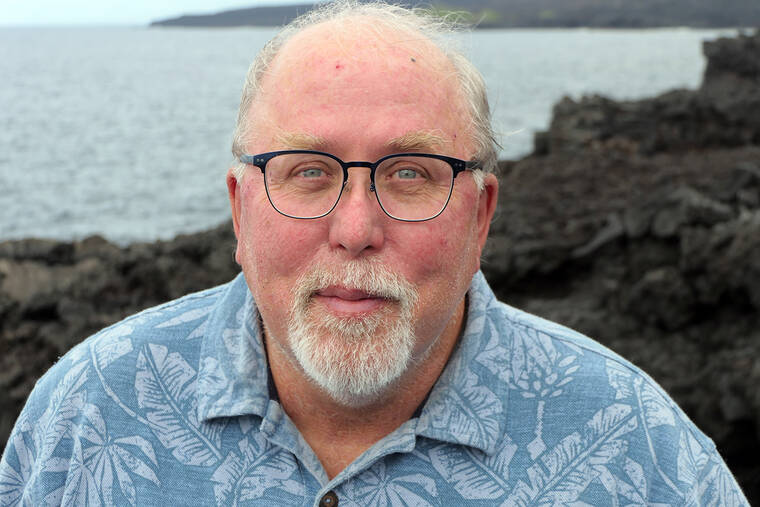A spike in seismic activity detected last weekend beneath Kama‘ehuakanaloa seamount — an undersea volcano south of Hawaii Island formerly known as Lo‘ihi — had subsided as of Thursday.
“It has quieted down significantly at this point,” said Ken Hon, scientist-in-charge at the U.S. Geological Survey’s Hawaiian Volcano Observatory. “There are still a few tectonic earthquakes and stuff going on, but the tremors and the long-period pulses that were going on have quieted down.”
The increased activity began at about 2 a.m. Saturday, with HVO detecting tremors marked by pulses of seismic energy every 15-20 seconds. About 24 hours after the increase in seismicity began, two dozen magnitude-1.8 to magnitude-3.0 earthquakes occurred from 1:30 a.m. to 6 a.m. Sunday.
Hon said the activity was “likely the result of magma movement beneath Kama‘ehuakanaloa seamount” and didn’t appear to be leading to an eruption of the undersea volcano about 23.5 miles southeast of Pahala.
Although HVO released a statement Sunday about the swarm of earthquakes, which occurred 27 miles southeast of Naalehu at a depth of a mile to 10 miles below sea level, Hon said at the time he didn’t think the swarm would have a significant effect on the Big Island.
“Because of the great depth of the volcano within the ocean and style of Hawaiian eruptions, an eruption of Kama‘ehuakanaloa would pose no threat to the Island of Hawaii. Neither Mauna Loa nor Kilauea volcanoes show any change in activity associated with this earthquake swarm,” Hon said in the statement.
Hon said the summit of Kama‘ehuakanaloa is about a kilometer, or approximately 3,280 feet, below the ocean’s surface.
“That’s the equivalent of having, maybe, a thousand feet of rock on top of it,” Hon said Thursday. “That keeps it from having big, high fountains or having any major explosive activity. It’s really like having a lid on it, having the weight of that water on top of it.”
Asked if anything going on at Kama‘ehuakanaloa — which was renamed from Lo‘ihi a year ago by the Hawaii Board of Geographic Names — could have an effect on the Island Hawaii, Hon replied that island residents “might feel earthquakes at some point from down there.”
“There is the remote possibility that magma that comes up very shallow could trigger a landslide on Kama‘ehukanaloa,” he explained. “We know there have been past landslides there. We really don’t know the ages of any we detected. And something like that, a major movement, could cause a small, local tsunami across the southwest of the island.
“But we would pick that up, seismically. It would show up as a major event. Just like anything else, if you have a large earthquake that is adjacent to the island or close to the island, people need to evacuate the seashore — whether it’s from Kama‘ehuakanaloa or the south flank of Mauna Loa moving or Kilauea and Mauna Loa moving.
“Anytime you feel a large earthquake on the island, if you’re on the seashore, you should try to get back from the coast, as quick as you can and safely.”
There are no working monitoring instruments on Kama‘ehuakanaloa volcano. All real-time information about the volcano is derived from land-based seismometers on the Big Island.
Email John Burnett at jburnett@hawaiitribune-herald.com.

